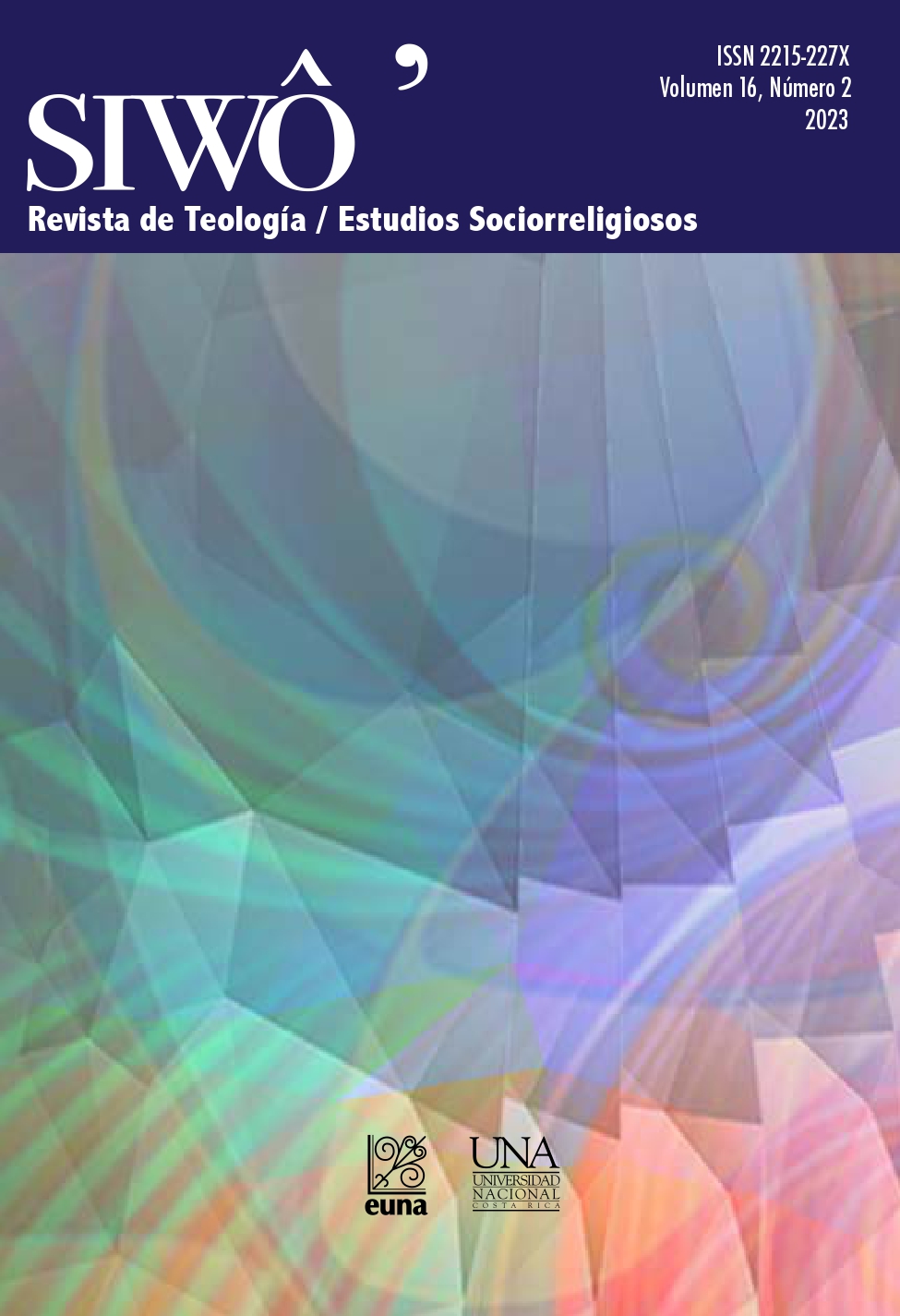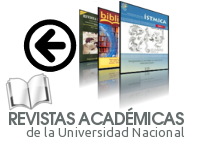Intercultural reading of the Bible and cultural anthropology: a way back and forth
DOI:
https://doi.org/10.15359/siwo.16-2.4Keywords:
cultural anthropology, socio-scientific approaches, interculturality, religious diversity, Bible and religionAbstract
This essay proposes, based on the recognition of cultural and religious diversity, that the use of social sciences, particularly social anthropology, is an indispensable tool for the intercultural reading of the biblical text. In the discovery of the Bible as product of conflicting memories, voices and cultures, be conscious of distances is a way of creating bridges between different realities but which, in fact, have always interacted and can discover new paths for humanity in the Bible and beyond the Bible.
References
Biblia de Jerusalén. (2019). Desclée de Brouwer.
Borges, J. L. (2010). “Fragmentos de un evangelio apócrifo”: Jorge Luis Borges. Obras Completas.Edición Crítica, vol. II. 1952-1972. Emecé.
Chéno, R. (2017). Dieu au pluriel.
Penser les religions. Du Cerf.
Daley, B: E. (2020). Cristo, el Dios visible. Sígueme.
El Corán. (2000). Herder.
Esler, P. (2005). New Testament Theology. Communion and Community. Fortress.
Fornet-Betancourt, R. (2008). “Teoría y praxis de la filosofía intercultural”: SIWÔ 1/1, 9-42.
Freedman, H.; Maurice, S. [eds.] and Judah J. S: [traductor]. (1939). Midrash Rabbah. Numbers. Tomo II. Soncino Press.
Geertz, C. (2003). La interpretación de las culturas. Gedisa.
Gil Arbiol, C. (2012). “Una lectura sociológica de las bienaventuranzas”: Letras de Deusto 137/42, 259-281.
Kottak, C. P. (2011). Antropología cultural. McGrawHill.
Lang, B. (1985). “Anthropology as a New Model for Biblical Studies”: Lang, Bernhard (ed.), Anthropological Approaches to the Old Testament. Fortress Press.
Lawrence, L. J. (2003). An Ethnography of the Gospel of Matthew. Mohr Siebeck.
Lawrence, L. J. (2013). Sense and Stigma in the Gospels. Depictions of Sensory-Disabled Characters. Oxford University Press.
Lindbeck, G. A. (2018). La naturaleza de la doctrina. Religión y teología en una época postliberal. Clie.
Malina, Bruce. J. (2007). El mundo del Nuevo Testamento. Perspectivas desde la antropología cultural. Verbo Divino.
Malina, Bruce. J. (2014). “El colectivismo en la cultura mediterránea”: Neufeld, Dietmar y Richard E. DeMaris (eds.). Para entender el mundo social del Nuevo Testamento. Verbo Divino.
Mena Oreamuno, F. (2021). Comentario intercultural al evangelio de Marcos. Introducción, estructura y comentario a Marcos 1.1-15. Sebila.
Mena Oreamuno, F. (2022). El oficio de la persona que hace exégesis. Sebila.
Mena Oreamuno, F. (2022). Los tejidos del caos: Hermenéutica bíblica desde América Latina. Sebila.
Miquel Pericás, E. (2011). El Nuevo Testamento desde las ciencias sociales. Verbo Divino.
Overholt, T. W. (1996). Cultural Anthropology and the Old Testament. Fortress Press.
Piñero, A. (2016). “Libros sagrados. Conceptos y nociones fundamentales”: Piñero, Antonio y Jesús Peláez(eds.). Los libros sagrados en las grandes religiones. Los fundamentalismos. Herder.
Poupard, P. (1998). Diccionario de las religiones. Herder.
Rosaldo, R. (1989). Cultura y verdad. Nueva propuesta de análisis social. Grijalbo.
Torres Queiruga, A. (2008). Repensar la revelación. La revelación divina en la realización humana. Trotta.
Zúñiga, H. (2019). “Misericordia ilimitada: revisión del modelo antropológico ‘bienes limitados’ en Mt 5,7”: Theologica Xaveriana 59/187, 1-27.
Zúñiga, H. (2022). Vivir para morir, morir para vivir. Estudio exegético y antropológico del motivo de la muerte en el libro de Eclesiastés-Qohélet. Sebila.
Additional Files
Published
How to Cite
Issue
Section
License
Política propuesta para Revistas que ofrecen Acceso Abierto
Los autores que publican en esta revista están de acuerdo con los siguientes términos:
1. Esta revista provee acceso libre bajo licencia Creative Commons Reconocimiento-NoComercial CC BY - NC. Usted como persona autora conserva sus derechos de autor. Esta licencia permite que otros remezclen, adapten y desarrollen su trabajo sin fines comerciales, siempre y cuando le den crédito y licencien sus nuevas creaciones bajo los mismos términos
2. Los autores pueden establecer por separado acuerdos adicionales para la distribución no exclusiva de la versión de la obra publicada en la revista (por ejemplo, situarlo en un repositorio institucional o publicarlo en un libro), con un reconocimiento de su publicación inicial en esta revista.
3. Se permite y se anima a los autores a difundir sus trabajos electrónicamente (por ejemplo, en repositorios institucionales o en su propio sitio web) antes y durante el proceso de envío, ya que puede dar lugar a intercambios productivos, así como a una citación más temprana y mayor de los trabajos publicados (Véase The Effect of Open Access) (en inglés).











